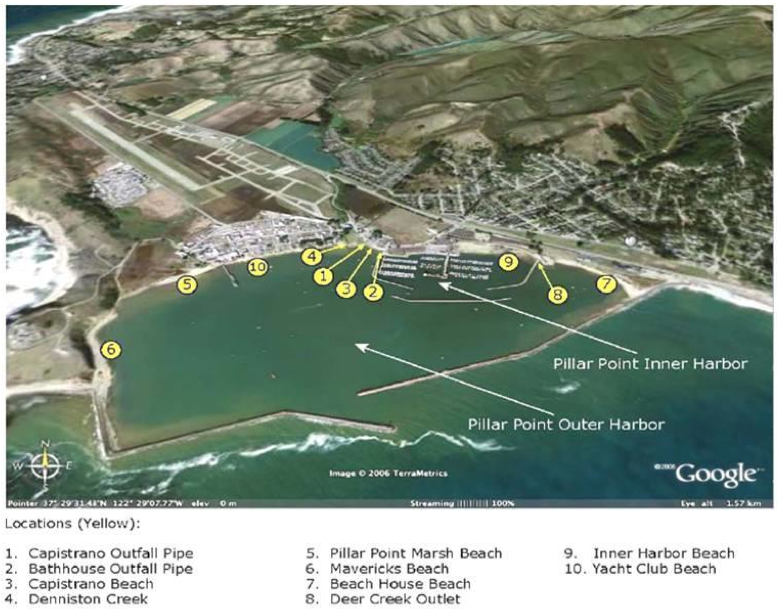Pillar Point pollution final report identifies cattle, dogs, and wildlife as sources
This was rewritten from a press release
The San Mateo County Resource Conservation District has released its final report on fecal contamination at Pillar Point Harbor.
The study focused on Capistrano Beach due to its well-documented, chronically high levels of bacteria found in the digestive tract and feces of warm-blooded animals. The secondary focus was the other five beaches of the harbor and the live-aboard boats within the harbor.
The study monitored beaches streams, tested the bacteria they found, and modeled the circulation of the harbor. Seventeen sites were sampled, including sites at the harbor and the urbanized upland area that drains into the harbor. A total of 514 water samples were collected for analysis of the amount of fecal indicator bacteria and a total of 225 samples of water, sediment, and biofilm were collected for genetic analysis.
Highlights of the study included:
- The high counts of bacteria entered the harbor through storm drains and creeks.
- Regardless of the original source, the bacteria accumulate and persist inside storm drains and on the surrounding vegetation at the outflows. These bacteria are released when flushed by waves and stormwater.
- Humans, birds, marine mammals, and horses are not significant sources of bacteria to the harbor.
- Dogs are a significant fecal source at Capistrano Beach and Deer Creek, but they are not the main source. Dog inputs are from upland sources, not at the beaches.
- Bovine inputs are the primary source at Deer Creek and were significant nowhere else. The report provides seven recommendations to reduce the contamination at the harbor.
- Upland wildlife may play a significant role in some of the contamination at the harbor via creeks and storm drains.
Top recommendations include:
- Work with property owners throughout the watershed to make the connection between the landscape, stormwater runoff, and the harbor. This includes managing dog and livestock waste in the upland areas.
- There are no reasonable ways to prevent wildlife waste from entering the storm drainage system. Recommendations focus instead on preventing contaminated stormwater from entering the harbor.
- Manage stormwater before it enters the storm drain system and local creeks using techniques such as vegetated filters and capturing rainwater.
$909,338.45 for the project was provided by the State Water Resources Control Board via Proposition 50: the Water Security, Clean Drinking Water, Coastal and Beach Protection Act of 2002. An additional $15,000 was provided by the San Mateo County Harbor District.
The report can be downloaded from the RCD’s website.

